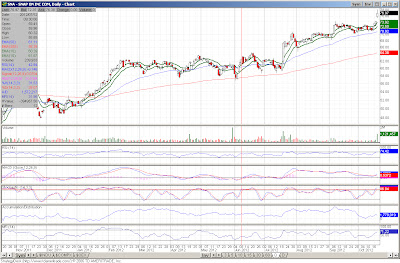As reported by Insider Monkey, Google execs were very active on the sales sides in September. Although the informational value of insider sales has diminished over the years, these sales look well timed.
Google Inc (NASDAQ:GOOG) released its quarterly earnings report a few hours early Thursday – by accident, the company claims – and the stock price plummeted 9 percent in just a few minutes in the middle of the trading day, forcing NASDAQ to suspend trading for a period. As the earnings report came out, it was a huge disappointment, as Google Inc. (NASDAQ:GOOG) earnings missed analysts’ estimates by 10 percent, which sent the stock down sharply. However, in the days just prior to the report, three prominent insiders sold off a significant number of shares that totaled more than $280 million, with the chairman of the board jettisoning more than $150 million by himself.
Google Inc (NASDAQ:GOOG) released its quarterly earnings report a few hours early Thursday – by accident, the company claims – and the stock price plummeted 9 percent in just a few minutes in the middle of the trading day, forcing NASDAQ to suspend trading for a period. As the earnings report came out, it was a huge disappointment, as Google Inc. (NASDAQ:GOOG) earnings missed analysts’ estimates by 10 percent, which sent the stock down sharply. However, in the days just prior to the report, three prominent insiders sold off a significant number of shares that totaled more than $280 million, with the chairman of the board jettisoning more than $150 million by himself.
Google Inc. (NASDAQ:GOOG) chairman Eric
Schmidt was very active in late September, as he executed 226
transactions in just three days from Sept. 24 to 26, selling off more
than 211,000 shares at per-share prices between $742 and $764 per share.
He came away with about $158 million.
Other noteworthy insiders are Google Inc. (NASDAQ:GOOG) CEO Larry Page and co-founder Sergey Brin, who had conducted several insider sales
in the first half of this month, totaling about $120 million in value
and the pair spared themselves about $12 million in combined losses.
Brin conducted a series of transactions Tuesday, October 2, selling
83,334 shares at between $750-$765 a share, with a combined value of at
least $62.5 million. Page had been selling shares regularly over several
days. Starting October 8, he sold 20,833 shares at $754-$762 a share
for a value of $15.7 million; 20833 shares at $744-$760 October 9, for a
value of $15.5 million; 20,833 shares at prices between $741 and $746
per share October 10, for a value of $15.4 million; and 20,835 shares at
prices between $752 and $758 October 11, a value of $15.7 million.


























